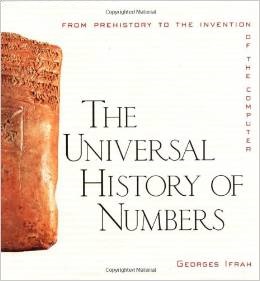Base 5 and Base 20
Base 10 is not the only way of constructing a numbersystem.
In addition to the decimal system, two other bases are reasonably widespread, but their character confirms to a remarkable degree the anthropomorphic nature of our counting scheme. These two other systems are the quinary, base 5, and the vigesimal, base 20.
The quinary system evidently originated among people who had the habit of counting on one hand. But why should man confine himself to one hand? Dantzig has speculated that it may have to do with the conditions of life in warrior societies: a plausible explanation is that primitive man rarely goes about unarmed. If he wants to count, he tucks his weapon under his arm, the left arm as a rule, and counts on his left hand, using his right hand as check-off. This may explain why the left hand is almost universally used by right-handed people for counting.
For example, Api, a language spoken in the New Hebrides (Oceania), gives individual names to the first five numbers only:
- 1 tai
- 2 lua
- 3 tolu
- 4 vari
- 5 luna (literally, "the hand")
And then uses compounds for the numbers from 6 to 10:
- 6 otai (literally, "the new one")
- 7 olua (literally, "the new two")
- 8 otolu (literally, "the new three")
- 9 ovari (literally, "the new four")
- 10 lualuna (literally, "two hands")
The name of 10 then functions as a new base unit::
- 11 lualuna tai (=2x5+1)
- 12 lualuna lua (=2x5+2)
- 13 lualuna tolu (=2x5+3)
- 14 lualuna vari (=2x5+4)
- 15 toluluna (=3X5)
- 16 toluluna tai (=3x5+1)
- 17 toluluna lua (=3x5+2)
And so on.




